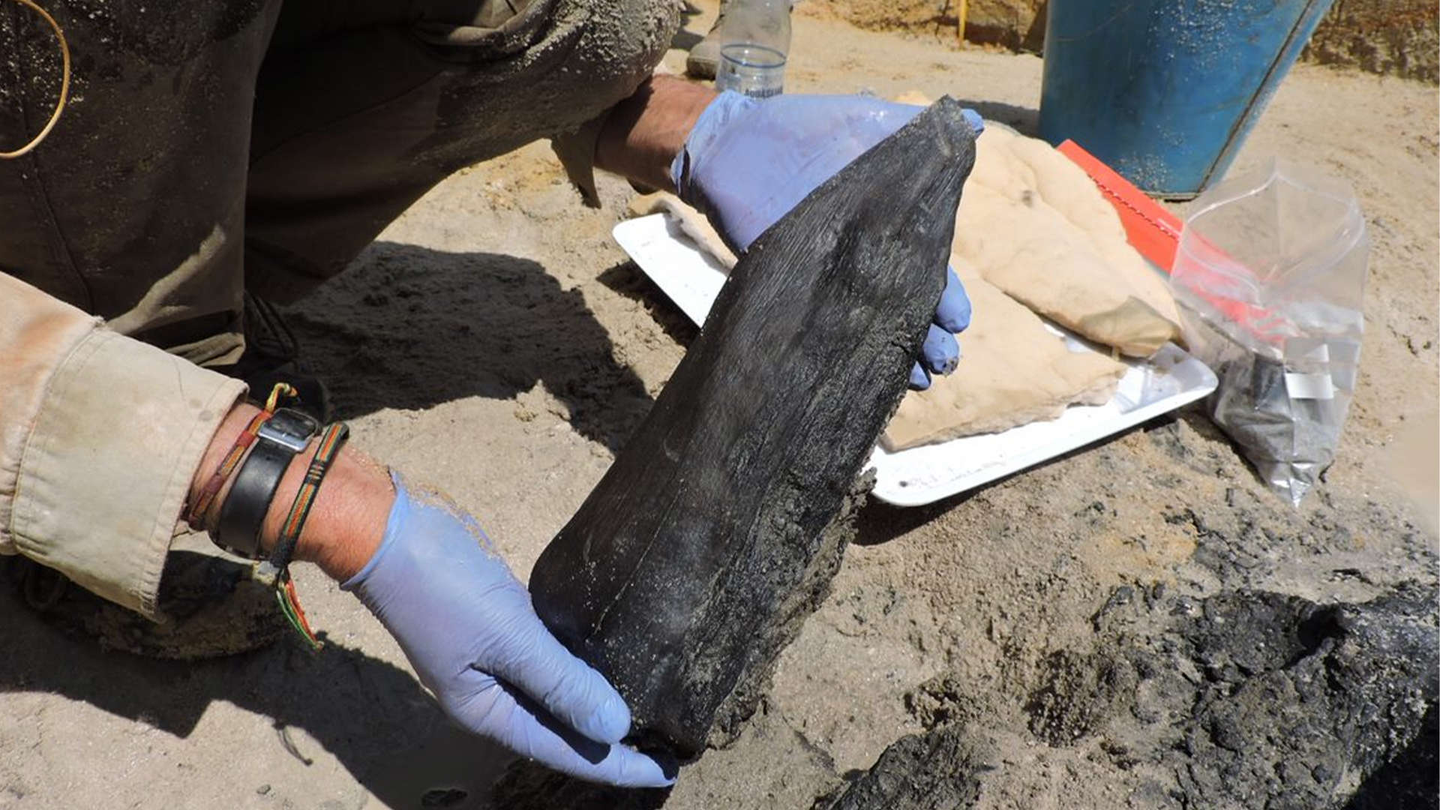World’s oldest wooden structure found: Pre-dates Homo sapiens by over 120,000 years
The most ancient evidence of wood being used in construction, predating the evolution of Homo sapiens by potentially over 120,000 years.

[Sept. 25, 2023: Staff Writer, The Brighter Side of News]
A wedge shaped piece of wood. (CREDIT: Professor Larry Barham, University of Liverpool)
In a discovery that pushes the boundaries of our understanding of early human innovation, archaeologists have unearthed a wooden marvel in the heart of Zambia's Kalambo Falls, challenging conventional knowledge about the technical prowess of our distant ancestors.
This astonishing finding marks the most ancient evidence of wood being used in construction, predating the evolution of Homo sapiens by potentially over 120,000 years.
Kalambo Falls: More Than Just a Waterfall
Kalambo Falls, an awe-inspiring 772-foot-tall waterfall located on the Zambia-Tanzania border, is not just Africa's second-highest uninterrupted cascade. It now also becomes a focal point in our quest to understand early human ingenuity.
Kalambo Falls, Zambia where the wood was found. (CREDIT: Professor Geoff Duller, Aberystwyth University)
The structure excavated at this site includes two meticulously crafted logs that interlock, bearing unmistakable signs of intentional shaping and tool marks, underscoring the meticulous handiwork of Stone Age artisans.
While the term "Stone Age" traditionally evokes images of our predecessors employing rudimentary stone tools, this discovery casts early hominins in a new light.
Professor Larry Barham (pictured, right) uncovering the wooden structure on the banks of the river with a fine spray. (CREDIT: Professor Geoff Duller, Aberystwyth University)
According to study co-author and University of Liverpool archaeologist Larry Barham, "This find has changed how I think about our early ancestors. Forget the label ‘Stone Age,’ look at what these people were doing: they made something new, and large, from wood.”
The Evolution of Woodwork
The two interlocking logs provide compelling evidence of early humans fashioning wood into complex designs. Historically, wood from this era was believed to have rudimentary applications, such as crafting spears, aiding in digging, or fueling fires.
However, this latest find at Kalambo hints at its potential use in more advanced constructions, possibly serving as platforms, walkways, or even forming the bases for shelters on the region's periodically inundated floodplains.
Related Stories:
The location of this artifact, paired with its possible implications, presents a riveting case for early human habitation patterns. The lush forests around Kalambo Falls would have offered an abundant supply of wood, while the waterfall itself guaranteed a perennial water source.
The utility of these logs in construction suggests that our ancestors might not have been as nomadic as previously believed. Larry Barham aptly captures the sentiment, “They transformed their surroundings to make life easier, even if it was only by making a platform to sit on by the river to do their daily chores. These folks were more like us than we thought.”
Pinning Down the Past: The Science of Luminescence Dating
Arriving at a precise age for these relics required leveraging innovative luminescence dating techniques. This method, as study co-author and Aberystwyth University geographer Geoff Duller states, revolves around determining when minerals in the sediment enveloping the artifact last saw sunlight. “At this great age, putting a date on finds is very challenging. These new dating methods have far-reaching implications – allowing us to date much further back in time, to piece together sites that give us a glimpse into human evolution."
The excavation team uncovering the wooden structure. (CREDIT: Professor Larry Barham, University of Liverpool)
This groundbreaking research is a testament to the relentless efforts of the Deep Roots of Humanity project. This interdisciplinary consortium, consisting of researchers from across the globe, aims to unravel the mysteries surrounding the technological evolution of humans during the Stone Age.
As Barham excitedly proclaims, “Kalambo Falls is an extraordinary site and a major heritage asset for Zambia. The Deep Roots team is looking forward to more exciting discoveries emerging from its waterlogged sands.”
The wooden structure, showing where Stone Age Humans have cut into the wood. (CREDIT: Professor Larry Barham, University of Liverpool)
The archaeological site at Kalambo Falls, first explored in the mid-20th century, is awaiting its rightful recognition as a UNESCO World Heritage site, given its monumental archaeological importance.
This revelation, bridging us to our distant ancestors and their ingenious constructions, serves as a poignant reminder that every fragment of the past, no matter how concealed, possesses the power to reshape our understanding of human history.
For more good news stories check out our Global Good section at The Brighter Side of News.
Note: Materials provided above by The Brighter Side of News. Content may be edited for style and length.
Like these kind of feel good stories? Get the Brighter Side of News' newsletter.
Joseph Shavit
Head Science News Writer | Communicating Innovation & Discovery
Based in Los Angeles, Joseph Shavit is an accomplished science journalist, head science news writer and co-founder at The Brighter Side of News, where he translates cutting-edge discoveries into compelling stories for a broad audience. With a strong background spanning science, business, product management, media leadership, and entrepreneurship, Joseph brings a unique perspective to science communication. His expertise allows him to uncover the intersection of technological advancements and market potential, shedding light on how groundbreaking research evolves into transformative products and industries.



